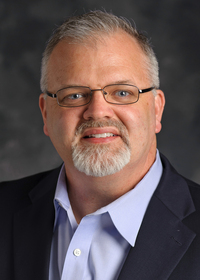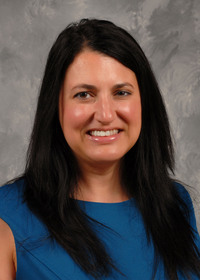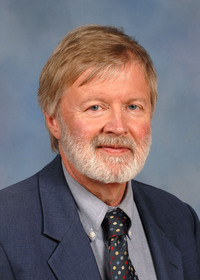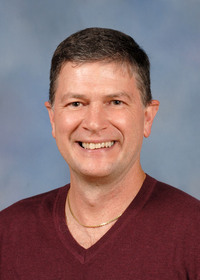Regional Economic Development and Marketing Rural Tourism Events Using Facebook: The Woodville Deer and Wildlife Case
Social advertising has received significant attention since the introduction of Facebook, X/Twitter, and other social media platforms. Facebook has more than 1.3 billion users, indicating its potential to be a beneficial advertising tool for many organizations, institutions, and businesses. With an increase in mobile users via smartphones, many mobile advertising options also exist. Facebook offers advertising aimed at the type of devices used to access Facebook, including desktop and mobile platforms. Furthermore, business owners have a choice when it comes to using paid advertisements within Facebook.
Two paid options exist. First, a business owner can use Facebook’s Start to Success Program. The program provides assistance with the development of advertisements, as well as four 1-hour consultations during a 30-day campaign. These consultations provide a way for business owners to learn how to optimize advertisement investments. Optimization usually means adjusting the advertisement message or image in some way to gain more favorable impressions (viewing of the advertisements) within Facebook. Facebook requires a minimum of $1,500 in a 30-day period to access the program.
The second option is to simply follow Facebook’s suggested approach within a business page. A business owner would access these options by clicking on the various promote buttons within a page’s administrative setup. Both paid options provide owners with access to an enormous online market of potential customers who can be reached through paid advertisements. This can be especially important for rural business owners who lack a sufficient customer base.
Within Facebook, business owners can also use organic marketing. Organic simply refers to owner-driven posting of various content on a business page to engage fans, as well as managing conversations. Business owners can then blend organic with paid advertisements to increase engagement with current fans and reach new fans. Maximum reach can be attained when fans voluntarily share content across Facebook. This can often cause an advertisement or organic message to go “viral.” The upshot for a business owner is that reaching new potential customers within Facebook can increase the likelihood of selling a product or service offered by the business.
Creating such a blended marketing strategy, using organic and paid advertisements, can be a challenge for business owners. This is especially true if business owners are unaware of the various paid options to maximize reach or are uncertain about how paid advertisements can increase business sales. In many ways, the use of paid advertisements can be likened to an experience good: only after an experience does a business owner truly understand how this form of advertising can be best used to market his or her business. In other words, business owners have to be willing to learn through natural experimentation.
Unique business-driven experiments are required when there is no relevant historical data. The same can be said for organic marketing. The implication is that conducting natural experiments with alternative advertisement messages (and images) is a necessary part of learning how to market a business using Facebook. Business owners who are willing to conduct natural experiments will learn more about the causal relationships between advertisement messages (and images) and reaching potential customers. Though natural experiments are difficult to replicate, learning-by-doing from well-thought-out experimentation can result in a competitive advantage.
We believe a significant opportunity exists today for business owners to leverage Facebook’s network. However, we also believe a barrier exists that can prevent business owners from using Facebook’s paid advertisement options because of its experience good characteristics. By experience good characteristics, we mean a business owner would need to experience or conduct his/her own paid advertisement campaign to truly understand how the advertising model works within Facebook. Part of the overall solution to help business owners market their businesses on Facebook is to provide practical advice on how to design, implement, and optimize paid advertisements within Facebook. This type of learning can improve marketing efforts and overall returns from social advertising.
MSU Extension agricultural economists worked with the Wilkinson/Woodville County Chamber of Commerce to implement a paid Facebook advertisement campaign to market the Annual Deer and Wildlife Festival (DWF) in Woodville. The chamber opted to use Facebook’s Start to Success Program 30 days before the event and agreed to a set of experiments using alternative paid advertisements. We worked with the chamber to develop an experimental design. This publication highlights the results and lessons learned from this experience. We hope the lessons learned in the DWF project can help business owners improve their use of Facebook’s paid advertisement tools in the future.
The Mississippi Bricks to Clicks Entrepreneurship Extension Program
Mississippi Bricks to Clicks is an MSU Extension entrepreneurship program for all types of businesses including non-profits, faith-based organizations, business consulting companies, social media marketing firms, and university-based organizations. The primary goal of the program is to help entrepreneurs start and grow their online businesses through social media, blogs, websites, mobile applications, and/or e-commerce solutions.
The first curriculum available for implementation in Mississippi focuses on using Facebook’s network to grow business profits. The Facebook training curriculum helps small business owners build and market their Facebook business pages. Through one-on-one consultations and interactive lectures, small business owners can learn many best practices to build and grow their Facebook business pages using paid and organic marketing strategies. The Facebook curriculum has been designed to minimize the cost of learning-by-doing by teaching small business owners how to conduct experiments in a practical yet scientific manner. The Facebook curriculum consists of four modules.
Module 1: Building Your Facebook Business Page
Before clients spend time in class, we work one-on-one with them to build their Facebook pages. We help each client identify pictures, company information, and much more. We then use this information to complete their page. After that, they are ready for class.
Module 2: An Introduction to Facebook Business
Clients receive an overview of the important parts of learning how to conduct business on Facebook. We discuss EdgeRank, Facebook Insights, and mobile tools, and we provide clients with an overview of how Facebook can drive online sales. We review several studies that show the impact Facebook has on business sales.
Module 3: Marketing Your Facebook Business Page Using Organic Engagement Strategies
Clients receive in-depth information on how to use organic marketing strategies to grow their pages. By organic, we mean a business owner assumes the role of posting content and encouraging conversations on the business page instead of outsourcing for this type of social media marketing assistance. We analyze real Facebook pages and their data and show how to understand Facebook Insights. We also teach a basic point system to help clients understand when and how to post effective content. We share planning tools and much more to help clients become proactive in their organic marketing efforts.
Module 4: Marketing Your Facebook Business Page Using Paid Advertisement Strategies
Clients receive an overview of all promotional products that can be used to promote their Facebook page’s content. We demonstrate how to implement many different paid advertisements and explain case study evidence of successful event and post promotions.
The Facebook training curriculum was pilot tested in Woodville over an 8-week period. In this publication, we focus only on the results from the Facebook experiment we conducted to market DWF’s page when using Facebook’s Start to Success Program. The chamber elected to use this program only after attending the initial Mississippi Bricks to Clicks program. The chamber indicated that they would not have invested the $1,500 into paid advertisement marketing without having been part of the class because they did not have the experience or expertise to conduct such a campaign.
Economic Development and Facebook Marketing
The chamber inquired about using Facebook advertising after participating in the 8-week Mississippi Bricks to Clicks pilot program. We provided technical assistance to help formulate a natural Facebook marketing experiment using paid advertisements. The goal of the experiment was to maximize page likes for the DFW Facebook page, which is administered by the chamber. Page likes are essentially unsolicited verification of quality (votes of confidence) from the public, or fans. The sharing of who has liked a page across Facebook users creates a ”bandwagon” effect. The bandwagon effect has long been shown to be a powerful stimulus to negate undecided opinions. Greater levels of page likes are indicative of a greater potential consumer acceptance of the event (product).
The paid advertisement campaign was conducted from September 12 to October 12, 2013. The annual event was held in Woodville on October 12. We worked with the chamber and Facebook to craft four advertisements. A highlight of the 2013 event was an appearance by A&E’s Duck Dynasty star John Godwin. Each of the four advertisements created within Facebook were structured using some information about this celebrity appearance. Only one of the four images used in the campaign did not feature John Godwin in some manner.
We began the process by educating the chamber about the various options to promote their DWF Facebook business page (facebook.com/WoodvilleDeerandWildlifeFestival). We consulted Facebook’s website and, together with the chamber, learned about a new program called Start to Success. The program provides direct technical assistance four times over the course of a 30-day paid advertisement campaign. The minimum advertisement investment recommended was $1,500 for 30 days. The next step was to design a set of experiments by first creating specific advertisement treatments found in the research literature, broadly defined as social advertising.
Experimental Design
Initially, we consulted more than 35 research studies to derive several alternative messages that could be used to market the celebrity appearance. In addition, we used the experience of Facebook personnel to develop a target region for advertisements along with the area chosen by the chamber. The target region was selected as those individuals 18 and older, living within 150 miles of Woodville, who had a strong affinity for having “liked” similar pages (e.g., Swamp People, Gander Mountain). We also targeted groups using conversations or hashtags. When selecting hashtags, we first chose #WillieRobertson to begin the process. That search yielded 1.5 million hits—that is, the hashtag #WillieRobertson was being used in 1.5 million conversations. We selected many similar pages and related hashtags with the help of Facebook. Using the Start to Success program allowed the use of targeting by hashtags and similar pages and the assistance of a Facebook consultant throughout the design phase of the experiment.
From a review of previous studies and the assistance of Facebook, we crafted the messages to be used in the experiments. We used four similar messages. We used the words “Don’t Miss,” “Fun Times,” “Eat Alligator,” and “Attend” as the call to action wording in our advertisements (Table 1). Each of the first three messages included phrases that began with the call to action words “Don’t Miss,” “Fun Times,” and “Eat Alligator.” The fourth message used the word “Attend” and was the only message to include “with your friends.” Figures 1, 2, and 3 on the next page show the Facebook advertisements used in the experiment.
Next, we segmented the experiment into two stages per Facebook’s recommendation. We referred to these stages as the test and trial stages. The test stage lasted 1 week. The subsequent trial stage lasted 3 weeks. The entire experiment concluded in 4 weeks. The Start to Success program provided a 1-hour consultation at the end of each week.
In the test stage, we used results from the first week to determine which advertisement strategy per platform performed best according to Facebook’s metrics of success. The Facebook consultant examined three key performance metrics: impressions, advertisement frequency, and click-through rate (CTR; clicks/impressions). These metrics have been found by Facebook consultants to be highly correlated with page likes. The examination of these metrics is what we refer to as Facebook’s optimization process for advertisements in its Start to Success program. For each metric, we reviewed the trend for the previous week (constant, decreasing, or increasing).
|
Advertisement Description |
Social Message |
Targeted Group |
Similar Page Interests |
Similar Conversations (#) |
|
Don’t Miss the 2013 Woodville Deer and Wild and Wildlife Festival Featuring A&E’s Duck Dynasty star John Godwin |
No |
All people living within a 150-mile radius of Woodville, MS, over the age of 18 who are NOT fans of the Deer and Wildlife Fan Page |
Duck Dynasty, Willie Robertson, Swamp People, Gander, Mountain, Ducks Unlimited, Cabelas, BassPro |
#Willie Robertson, #Cabelas, #Ducks Unlimited, #National Wild Turkey Federation, #Duck Dynasty |
|
Fun Times at the Woodville Deer and Wildlife Festival featuring A&E’s Duck Dynasty star John Godwin |
No |
Same |
Same |
Same |
|
Eat Alligator at the Woodville Deer Festival with A&E’s Duck Dynasty star John Godwin |
No |
Same |
Same |
Same |
|
Attend the Deer Festival featuring A&E’s Duck Dynasty star John Godwin with your friends |
Yes |
Same |
Same |
Same |
Impressions refer to the number of times an advertisement was shown to people. If impressions were declining, this signaled the advertisement was no longer reaching the maximum number of people possible. We noted the trend and moved to the next metric, advertisement frequency. If frequency was 4 or less, then we moved on to the CTR. An advertisement frequency of 4 means a person saw an advertisement an average of 4 times before clicking on an advertisement. Since we were paying for impressions, the lowest possible frequency was preferred to minimize the average cost of reaching an additional person. Finally, we evaluated the CTR. The CTR measures engagement and is defined as the number of clicks (on the advertisements) divided by the number of impressions. We were informed that a CTR of 0.3 or 0.4 was optimal. The higher the CTR, the greater the number of clicks per impressions received. At 0.3, 30 percent of impressions resulted in people clicking on advertisements. Generally, advertisements that performed well had strong or steady impression growth, an advertisement frequency of less than 4, and a CTR of approximately 0.3. After selecting the best strategy on both desktop and mobile platforms based on impressions, frequency, and CTR, we continued the experiment another week. At the end of each week, this optimization process was repeated with the same Facebook consultant.



At the end of week 2, a conference call was conducted with the Facebook consultant to reevaluate advertisement performance. The only adjustment made was to change the image if impressions were declining significantly or if advertisement frequency was greater than 4. With no change, the original advertisement was allowed to run another week. At the end of week 2, the image was changed for the desktop campaign as impressions plateaued and advertisement frequency exceeded 4. This treatment is referred in the experiment as desktop 2. At the end of week three, the image for the desktop campaign was changed again for the same reasons. This is referred in the experiment as desktop 3. However, the image for the mobile campaign was never changed since its performance across impressions, advertisement frequency, and CTR was within the recommended optimal parameters.
Although we relied on Facebook’s advertisement optimization process, we also extended the experiment to include an organic marketing campaign consisting of techniques taught in the Mississippi Bricks to Clicks program. The idea behind organic marketing was to align three key elements and include promotions where needed. We attempted to align content to encourage conversations to create advertisement observer conversions. Conversions typically refer to converting conversations into sales. In this case, we were attempting to convert conversations into event attendance.
To encourage attendance, we conducted a promotional event on October 7 to give away a free ticket to see John Godwin. Facebook users were encouraged to “like” and “share” the post announcing the giveaway. At the end of two days, a randomly chosen winner was selected from the list of “likes” and “shares.” The post reached more than 20,000 people in only 20 minutes and also garnered 40 comments, 280 shares, and 345 likes (Figure 4).

Overall Results
Table 2 shows the experimental results for treatments in this experiment, or desktop 1, 2, 3, and mobile. Table 3 shows a set of Facebook definitions used to understand experimental results. Table 4 and Figures 5, 6, and 7 show overall advertisement performance. On average, the advertisements cost $388; gained 1,560 actions, 1,227 unique clicks, and 883 page likes; and lasted 16 days and gained 50 likes per day. Figure 5 shows the average cost per advertisement, with mobile having the lowest overall average cost. Figure 6 shows the variation in dollars spent and duration across each experiment. Because the image used for mobile was not changed, it has the highest duration among all advertisements. Figure 7 shows one additional metric used to evaluate the overall success among all advertisements. Based on likes per day, mobile outperformed all other advertisements. Given the goal of increasing page likes, the paid advertisements performed well, garnering some 3,532 page likes.
We also evaluated the contribution of organic likes gained during this time period. The page began the campaign with approximately 1,200 page likes. It gained 3,532 page likes from the Facebook paid advertisements and another 1,000 likes from organic engagement. The page increased from 1,200 likes (pre-campaign) to 5,500 likes by the day of the event. This represented a total gain of 4,532 page likes. Overall, organic and paid Facebook marketing increased page likes by 22 and 78 percent, respectively.
|
Campaign |
Image |
Impressions |
Social Impressions |
Clicks |
Social Clicks |
|
Desktop 1 |
John Godwin with camouflage face paint |
219,676 |
99,771 |
892 |
75 |
|
Desktop 2 |
John Godwin without camouflage face paint |
259,092 |
181,830 |
1,192 |
55 |
|
Desktop 3 |
Event logo |
77,448 |
37,498 |
518 |
13 |
|
Mobile |
John Godwin with camouflage face paint |
100,366 |
18 |
2,883 |
3 |
|
Variable Name |
Definition |
|
Impressions |
The number of times a post from your page is displayed, whether the post is clicked on or not. Reach is the number of unique people who received impressions of a page post. |
|
Social Impressions |
The number of times your ad was viewed with social information. For example, if three people see an ad two times each and it includes information about a friend liking your page, it counts as six social impressions. |
|
Social Percent |
The percent of impressions where the ad was shown with social context (i.e., with information about a viewer’s friend(s) who connected with your page, place, event, or app). |
|
Clicks |
Clicks are the total number of clicks on your ad. Depending on what you’re promoting, this can include page likes, event responses, or app installs. |
|
Social Clicks |
The number of clicks your ad receives when it’s shown with social information (e.g., “Jane Doe likes this”). |
|
Click-through Rate (CTR) |
The number of clicks you received divided by the number of times an ad was shown (impressions) on Facebook. |
|
Social CTR |
Social clicks divided by social impressions. |
|
CPC |
Average cost per click for ads, calculated as the amount spent divided by the number of clicks received. |
|
CPM |
Average cost you have paid to have 1,000 impressions on your ad. |
|
Spent |
The total dollar amount spent during the campaign across all ads. |
|
Reach |
The number of people who have seen your post. |
|
Frequency |
The average number of times each person saw your ad. |
|
Social Reach |
The number of unique people who saw an ad with social information. For example, if three people see an ad two times each and it includes information about a friend liking your page, it counts as three social reaches. |
|
Actions |
The number of unique people who took an action such as liking your page or installing your app as a result of your ad. For example, if the same person likes and comments on a post, they will be counted as one unique person. Actions are counted within 1 day of someone viewing your ad or 28 days after clicking on it. |
|
Page Likes |
The number of likes on your page as a result of your ad. Actions are counted within 1 day of someone viewing your ad or 28 days after clicking on it. |
|
Unique Clicks |
The total number of unique people who have clicked on your ad. For example, if three people click on the same ad five times, it will count as three unique people who clicked. |
|
Unique CTR |
The number of unique clicks as a result of your ad divided by the number of unique people you reached. For example, if you received 20 unique clicks and 1,000 unique people saw your ad, your unique click-through rate will be 2 percent. |
Source: www.facebook.com
|
Campaign |
Dollars Spent |
Actions |
Unique Clicks |
Page Likes |
Duration of Ad |
Ad Frequency |
|
Desktop 1 |
306 |
2,078 |
737 |
543 |
13 |
5.34 |
|
Desktop 2 |
298 |
1,011 |
1,092 |
636 |
12 |
5.23 |
|
Desktop 3 |
200 |
433 |
474 |
322 |
8 |
2.53 |
|
Mobile |
750 |
2,717 |
2,603 |
2,031 |
30 |
2.08 |
|
Total |
1,554 |
6,239 |
4,906 |
3,532 |
N/A |
N/A |
|
Average |
388 |
1,560 |
1,227 |
883 |
16 |
4 |
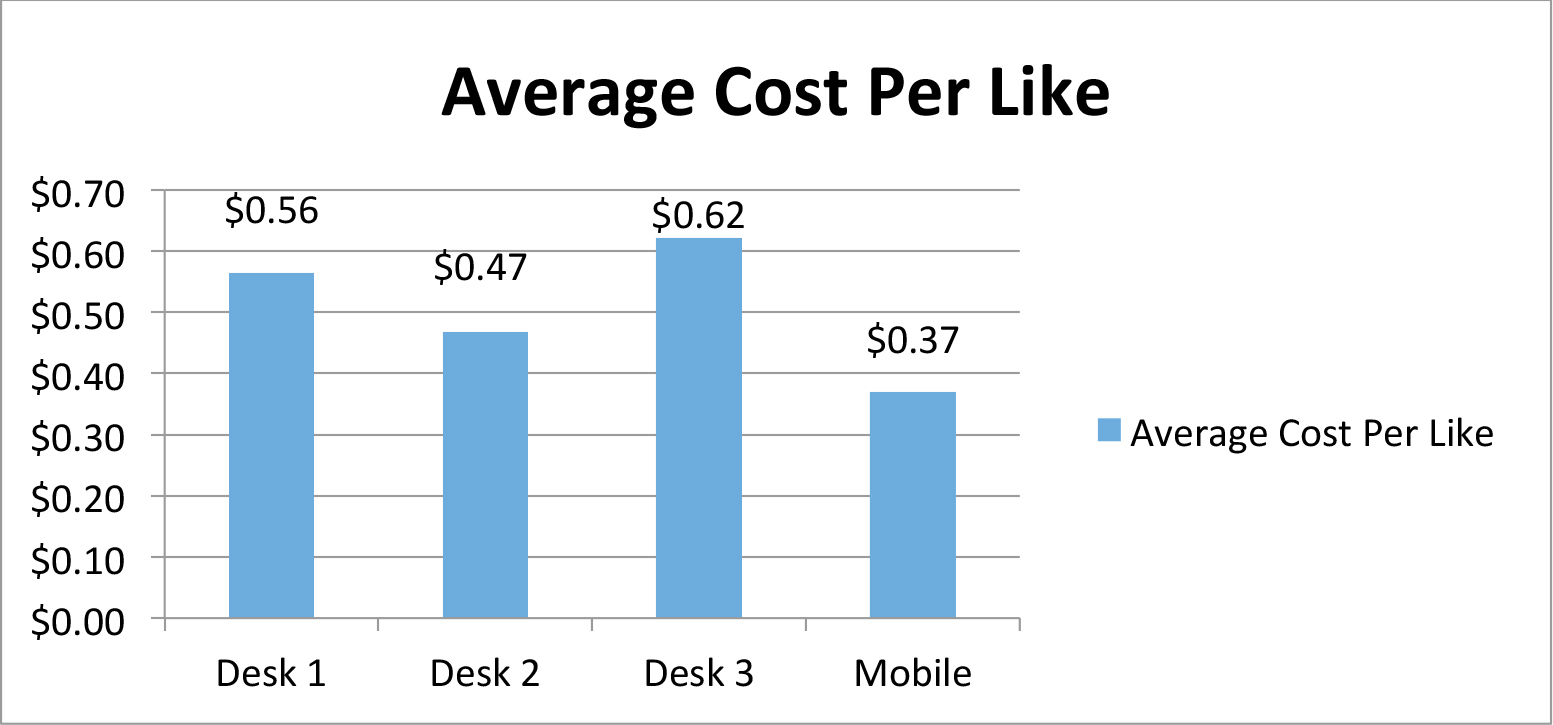



Table 4 also shows that, among all advertisements, mobile outperformed all others by generating 58 percent of all paid page likes (2,031/3,532). A total of $1,554 was spent during the experiment across all campaigns. The average cost per campaign ranged from 37 cents (mobile) to 62 cents (desktop 3). Figures 6 and 7 reinforced the idea that the mobile advertisement was the dominant performer among all the others.
Finally, we provided the chamber with a snapshot of the online engagement by locations targeted by the paid advertisement campaigns. Figure 5 shows all engagement actions taken with all advertisements used in the experiment by city. Engagement actions included clicks, comments, and shares across all advertisements. Woodville led all cities, with more than 8,000 engagement actions during the campaign. The top three cities included Woodville, Baton Rouge, and Natchez.
Implications
Facebook can be a valuable tool for marketing events and businesses, but there remains much to be learned. How do page likes, shares, and comments translate into increased event attendance and revenues? Based on data from the chamber, attendance increased approximately 30 percent from the previous year. Due to privacy concerns, revenues were not reported for the event. Unofficial reports suggest that the overall Facebook promotional campaign (paid plus organic) brought about a surge in the number of attendees for the 2013 event. We believe this was a result of the featured appearance of John Godwin and the Facebook marketing efforts.
Concluding Remarks
The paid Facebook advertisement campaign to market the DWF event in Woodville was designed to acquire “likes” for the DWF Facebook page and increase attendance at the event. Results suggest the experiment was successful, as more than 4,000 fans were added to the DWF Facebook page, and attendance increased by approximately 30 percent. Promoting rural businesses and events using Facebook appears to be a viable tool for economic development at the community level given that social media marketing can increase attendance and revenue collections by local governments.
More work is needed with other communities to learn more about how to conduct these types of natural Facebook experiments. We have incorporated many lessons learned from the Woodville project into a standardized Facebook training curriculum now offered statewide. Other curricula are currently being developed for X/Twitter, Instagram, YouTube, and Snapchat. Each platform can be taught in a four-module series similar to the Facebook curriculum. These curricula are being produced and made available because we believe businesses will benefit from using social media.
The Bricks-to-Clicks Extension Program offers similar marketing assistance to all Mississippi communities and businesses. To request assistance, email Dr. Barnes at james.barnes@msstate.edu.
References
Davis, D.D. & Holt, C.A. (1993). Experimental economics. Princeton University Press.
Nadeau, R., Cloutier, E. & GuayJ.H. (1993). New evidence about the existence of a bandwagon effect in the opinion formation process. International Political Science Review, 14(2): 203–213.
Tucker, C. (2016). Social advertising: How advertising that explicitly promotes social influence can backfire. http://dx.doi.org/10.2139/ssrn.1975897
Publication 2855 (POD-12-23)
By James Barnes, PhD, Associate Extension Professor, Agricultural Economics, and Kalyn Coatney, PhD, Professor, Agricultural Economics.
The Mississippi State University Extension Service is working to ensure all web content is accessible to all users. If you need assistance accessing any of our content, please email the webteam or call 662-325-2262.


